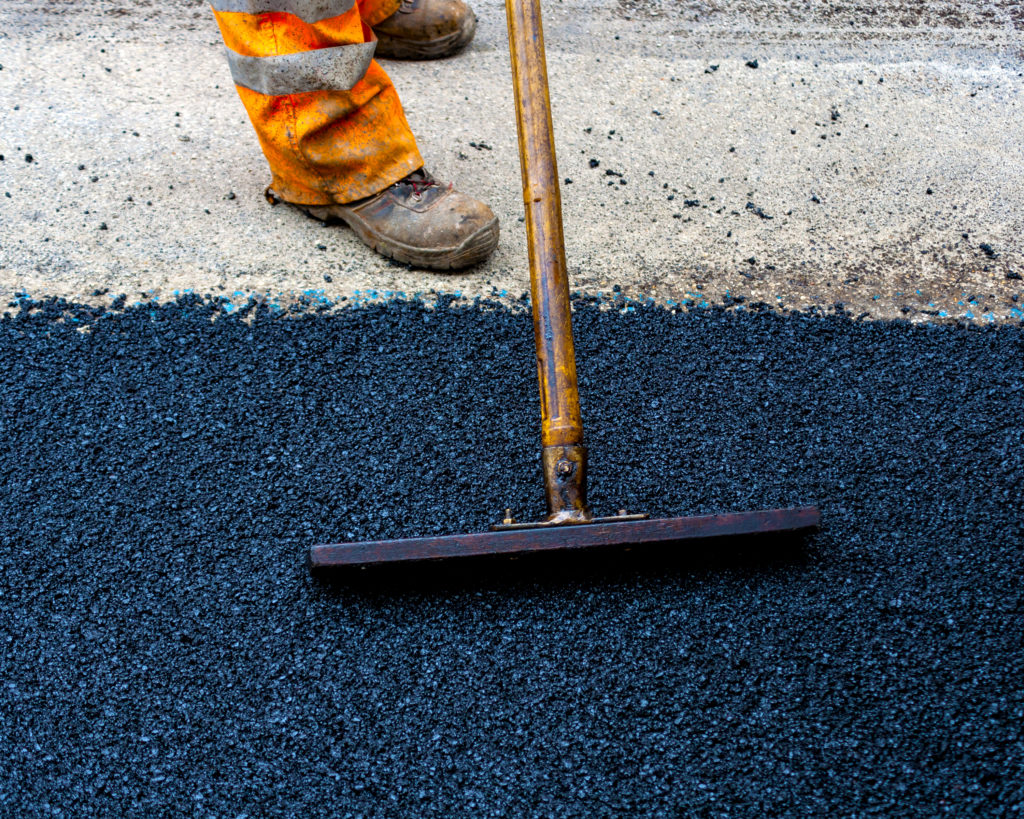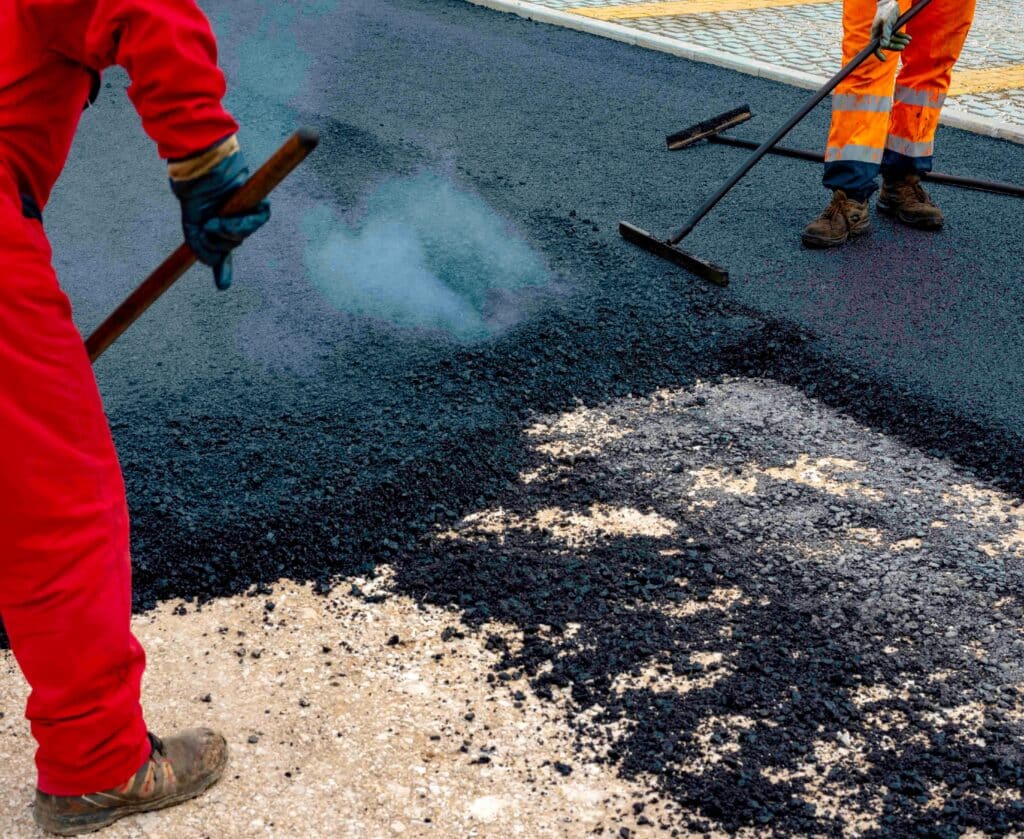Hot Mix Asphalt Paving: Elevating Commercial Parking Lot Requirements
Hot Mix Asphalt Paving: Elevating Commercial Parking Lot Requirements
Blog Article
Unlocking the Secrets of Hot Mix Asphalt Modern Technology
Exploring the midsts of warm mix asphalt technology uncovers a world where thorough processes and precise formulations converge to form our roads and facilities. The combination of aggregates, fillers, and binders isn't merely a construction task yet a critical orchestration of longevity and performance. As we peer right into the detailed dance of elements, a tapestry of resilience and sustainability unfolds. Yet what exists below this surface of asphaltic mastery, and what secrets wait to be introduced in the realm of leading advancements?
Value of Hot Mix Asphalt
Warm Mix Asphalt plays a critical function in modern framework growth due to its longevity and cost-effectiveness. As the most frequently used paving product for roads, freeways, and parking area, Hot Mix Asphalt supplies a series of advantages that add to its relevance in building and construction projects. One crucial benefit is its ability to hold up against rush hour loads and extreme climate problems, offering a long-lasting and reputable surface area for transport networks. Furthermore, Warm Mix Asphalt is cost-efficient in both initial building and construction and long-term upkeep, making it a preferred choice for numerous facilities jobs.
The toughness of Warm Mix Asphalt stems from its structure, which includes accumulations, binder, and filler materials that are carefully selected and blended to satisfy specific efficiency requirements. In general, the relevance of Hot Mix Asphalt in infrastructure advancement can not be underrated, as it continues to be a keystone of contemporary building and construction methods.
Components of Asphalt Mixes
The make-up of asphalt blends consists of meticulously chosen accumulations, binder, and filler materials that are vital for attaining particular performance needs. Aggregates are the key part of asphalt mixes, supplying strength and security. These accumulations can be all-natural, such as gravel or crushed stone, or artificial, like recycled products from old pavements. The binder, generally asphalt or asphalt concrete, holds the aggregates together and supplies adaptability and longevity to the mix. The option of the binder is essential as it straight influences the mix's performance in various weather. Fillers, such as moisturized lime or Rose city concrete, are used to enhance the mix's workability and aging resistance. Angled Parking.
The combination and percentage of these parts play a significant role in identifying the quality and efficiency of the asphalt mix. Designers very carefully make the mix to fulfill particular requirements, taking into consideration variables like website traffic quantity, environment problems, and sidewalk life-span. Appropriate choice and harmonizing of aggregates, binder, and fillers are necessary for developing long lasting, resilient asphalt pavements.
Mixing and Manufacturing Methods

Once the aggregates are selected, the binder, frequently asphalt concrete, is added to bind the products with each other. The binder's top quality and amount significantly impact the mix's resistance, adaptability, and stamina to environmental elements. Additionally, fillers like moisturized lime or Rose city concrete might be integrated to enhance certain features of the asphalt mix, such as its workability or moisture resistance.
During manufacturing, the accumulations and binder are heated up, generally between 250-325 ° F(121-163 ° C ), to help with mixing and make certain correct covering of the aggregates. The mixing procedure needs to be complete to accomplish a homogeneous mix that promotes the desired efficiency qualities of the asphalt. Different methods, such as set mixing or drum blending, are employed to attain high-grade and constant asphalt blends for building projects.
Variables Impacting Asphalt Efficiency
Elements affecting asphalt efficiency encompass a variety of variables that affect the longevity, longevity, and general top quality of asphalt pavements. One essential element is the quality of materials utilized in the asphalt mix.

Ecological conditions additionally influence asphalt efficiency. Temperature variants, dampness infiltration, and website traffic tons can all impact the architectural stability of the sidewalk. Design factors to consider, such as sidewalk density and water drainage, are vital in making sure the long-lasting performance angled parking of the asphalt pavement. By very carefully taking into consideration these engineers, elements and contractors can enhance asphalt efficiency and boost the life span of sidewalks.
Lasting Practices in Asphalt Modern Technology

In addition, the growth of warm-mix asphalt (WMA) modern technologies has acquired traction in the last few years. WMA permits the manufacturing and placement of asphalt mixes at reduced temperature levels compared to traditional hot-mix asphalt, leading to decreased energy usage and greenhouse gas emissions. The usage of porous asphalt mixes can assist reduce stormwater drainage problems by allowing water to penetrate through the sidewalk and into the ground, advertising natural water purification and charge procedures. By applying these lasting practices, the asphalt market can add to constructing a more eco friendly and resistant facilities network.
Final Thought
To conclude, hot mix asphalt innovation plays a crucial function in modern facilities advancement because of its longevity and cost-effectiveness. By carefully balancing parts, utilizing correct mixing methods, and thinking about different aspects, engineers can produce premium asphalt blends that stand up to rush hour loads and severe weather conditions. Embracing lasting techniques, such as using warm-mix modern technologies and recycled products, additionally improves the environmental friendliness of asphalt technology.
Mixing and manufacturing methods in hot mix asphalt technology entail the specific combination and processing of accumulations, binder, and fillers to develop a high-performance and durable asphalt mix.Aspects influencing asphalt performance include a range of variables that impact the longevity, long life, and general top quality of asphalt sidewalks. Sustainable practices in asphalt modern technology include various campaigns aimed at lowering the environmental impact of asphalt production and paving procedures. By incorporating redeemed asphalt pavement (RAP) and recycled asphalt tiles (RAS) into brand-new asphalt mixes, the sector can substantially reduce the consumption of raw products and energy, while likewise decreasing garbage dump waste.
WMA allows for the manufacturing and placement of asphalt blends at lower temperature levels contrasted to conventional hot-mix asphalt, resulting in decreased energy intake and greenhouse gas emissions.
Report this page